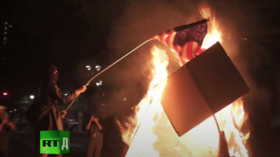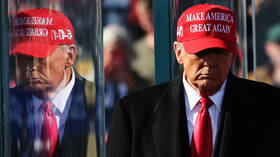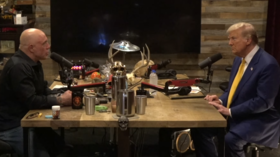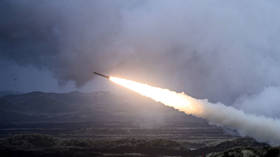‘Offensive’ and ‘inappropriate’: YouTube labels RT documentary on radical US groups

Documentary correspondent Konstanin Rozhkov spoke to RT about his film ‘Up in Arms’ being given warning labels by YouTube for “offensive” content contained in other videos that are left alone by the tech giant.
If one wants to watch ‘Up in Arms’, a film with firsthand footage of divisive and sometimes violent protests that have occurred across the US this year, YouTube first presents a warning about the potentially “inappropriate” content.
If a user’s settings are set to Russian, they are told the 27-minute film contains material “that might frighten or shock some users.”
Those with US settings are told that the content “has been identified by the YouTube community as inappropriate or offensive to some audiences.” Users also need to sign into the platform to confirm they are over 18 years old.
Also on rt.com ‘This is disputed’: Twitter’s obsessive tagging of Trump election posts spawns meme responseOn top of these hoops to jump through to stream the documentary, the movie itself already contains a warning before it begins rolling, which reads: “The views expressed ARE NOT shared by either the RT network or the filmmaker.”
‘Up in Arms’ contains footage from protests that have turned violent in cities like Portland, Oregon, as well as first hand interviews with members of groups that have been labeled extremist by critics on both sides of the political aisle like Boogaloo Boys and Antifa.
“I have no explanation, whatsoever,” Rozhkov said of the warning labels, noting that similar footage and interviews can be found on YouTube in videos that require no warning labels.
“For some reason, we’re getting special treatment from YouTube,” the filmmaker said.
And it’s not the first “special treatment.” Rozhkov noted that when the RT Documentary channel reached the milestone of one million subscribers, they never received a prize the platform awards all channels who reach the feat, a golden YouTube button. Many YouTubers make videos of them receiving the prize in honor of hitting the landmark.
When RT inquired to YouTube about not receiving the button, the platform said they were opening an investigation into the matter. This was seven months ago.
It is this experience, Rozhkov said, that does not give him much hope for an official complaint about the new warning label going anywhere.
“Given the past experience...we’re not expecting too much,” he said, adding later there is a “double standard approach” to RT. He also blasted the tech platform for not being “consistent” in their policies.
Also on rt.com Ban on political adverts extended by Google & Facebook as US election rolls onThough the warning and age requirement are not “blanket censorship,” Rozhkov believes it should be treated as such because the effect is still nearly as damaging. The documentary received 60,000 views before being hit with a warning label, and that move has slowed views on the movie down. It currently stands at around 67,000 views after one week.
The label “shrinks the audience,” Rozhkov said because it makes users more hesitant to watch the content in public places or with their families around.
Though he said he found some of the comments from members of the radical groups, especially about potential violence, disturbing himself, “those are just words. You can’t be punished by words.”
Think your friends would be interested? Share this story!














